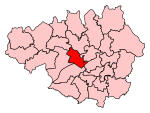Swinton railway station (Greater Manchester)

Swinton railway station serves the towns of Swinton and Pendlebury in the City of Salford, Greater Manchester, England. It is actually located in Pendlebury and not Swinton itself; the boundary between the two districts is about 40 yards further down Station Road (B5231), beyond the junction with Boundary Road and nearer the town centre. It opened, along with the line to passenger trains, in June 1887. Swinton is on the Manchester to Southport Line. The station is located 5 miles 4 chains (8.1 km) north-west of Manchester Victoria, There are regular Northern Trains services to destinations such as Wigan North Western, Wigan Wallgate, Kirkby, Blackburn and Leeds; these services stop at local towns such as Salford, Atherton and Hindley. Onward trains take passengers on to Southport, although occasional services are direct. Although the station is in the City of Salford, rather than Manchester, the name Swinton (Manchester) is used by National Rail to refer to the station; this is to avoid confusion with Swinton railway station in South Yorkshire.
Excerpt from the Wikipedia article Swinton railway station (Greater Manchester) (License: CC BY-SA 3.0, Authors, Images).Swinton railway station (Greater Manchester)
Boundary Road, Salford Newtown
Geographical coordinates (GPS) Address External links Nearby Places Show on map
Geographical coordinates (GPS)
| Latitude | Longitude |
|---|---|
| N 53.5148 ° | E -2.3367 ° |
Address
Swinton (Manchester)
Boundary Road
M27 6AB Salford, Newtown
England, United Kingdom
Open on Google Maps






